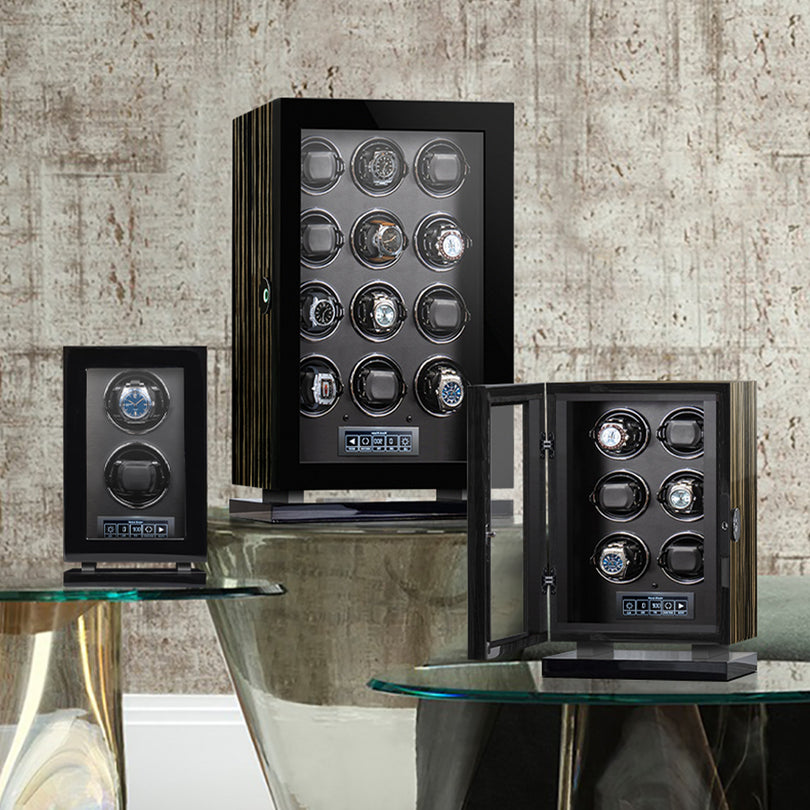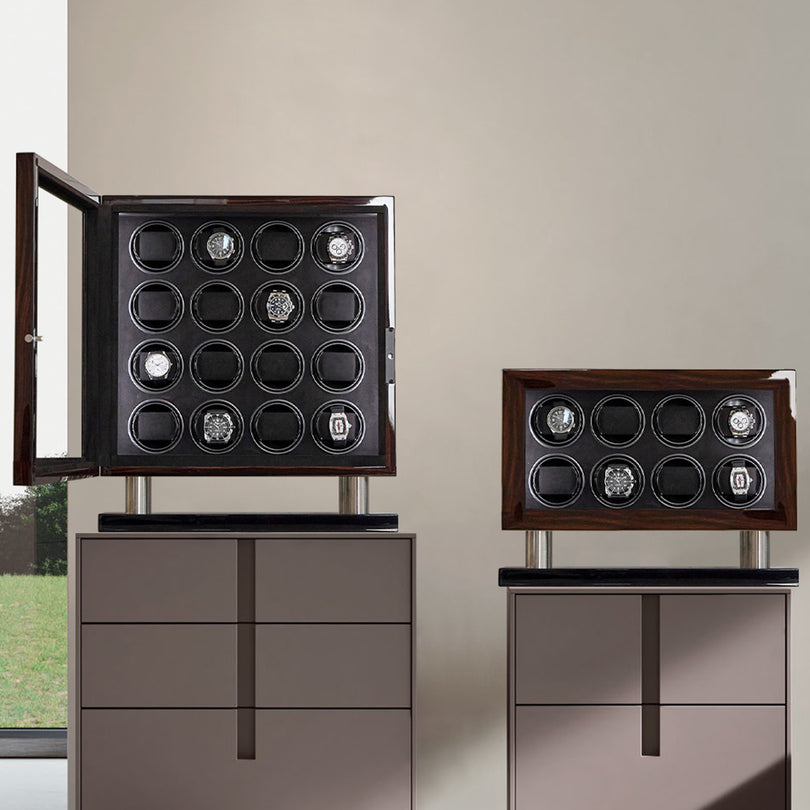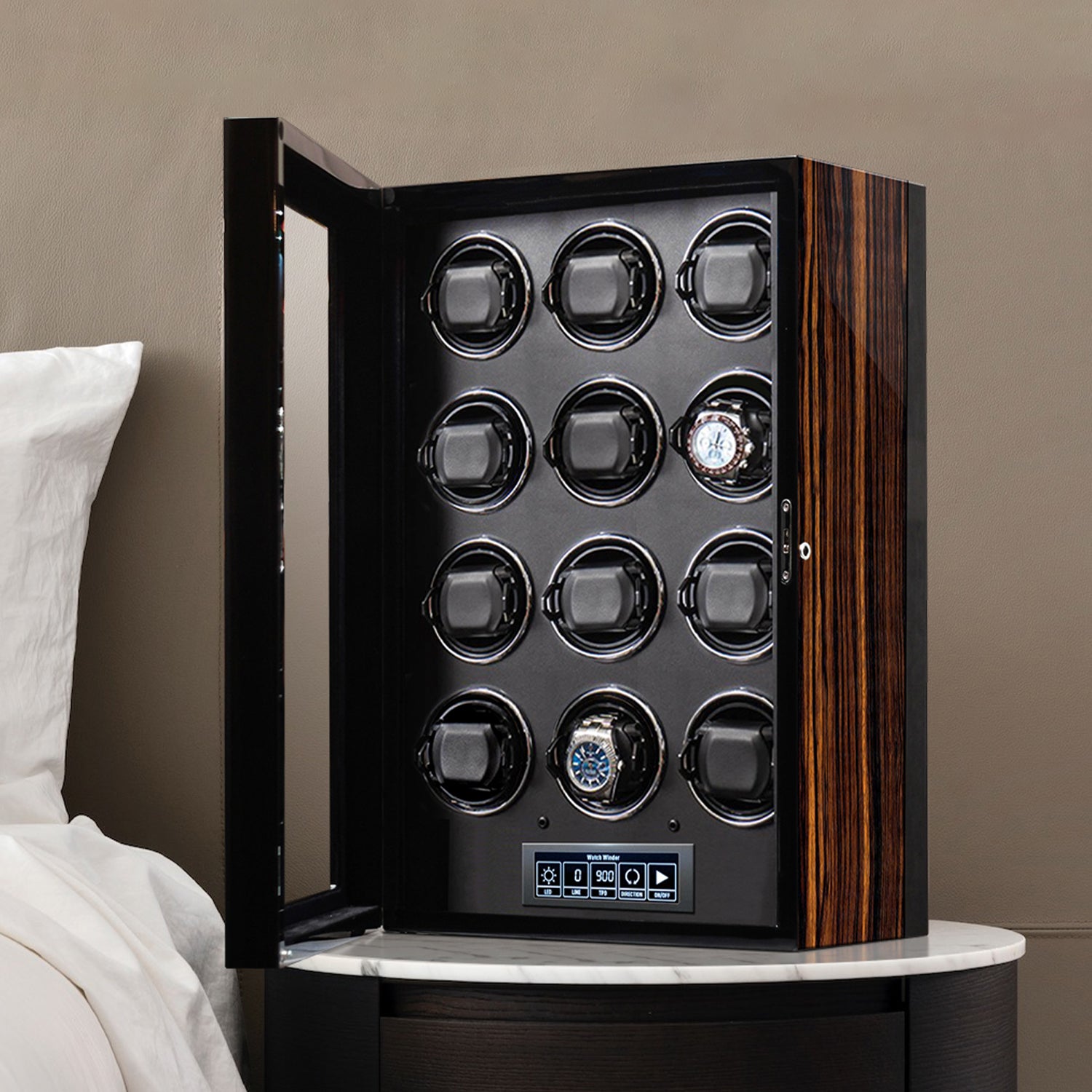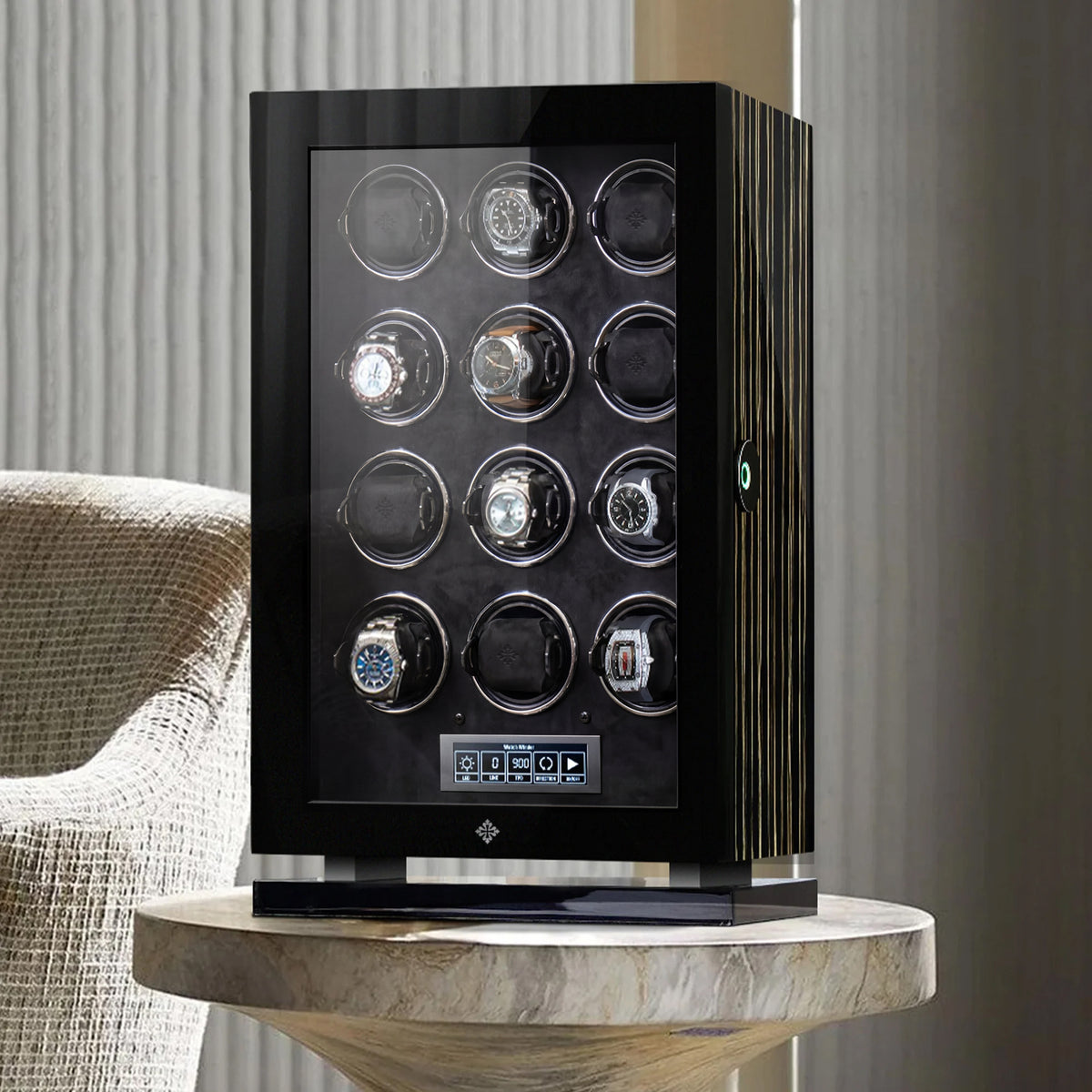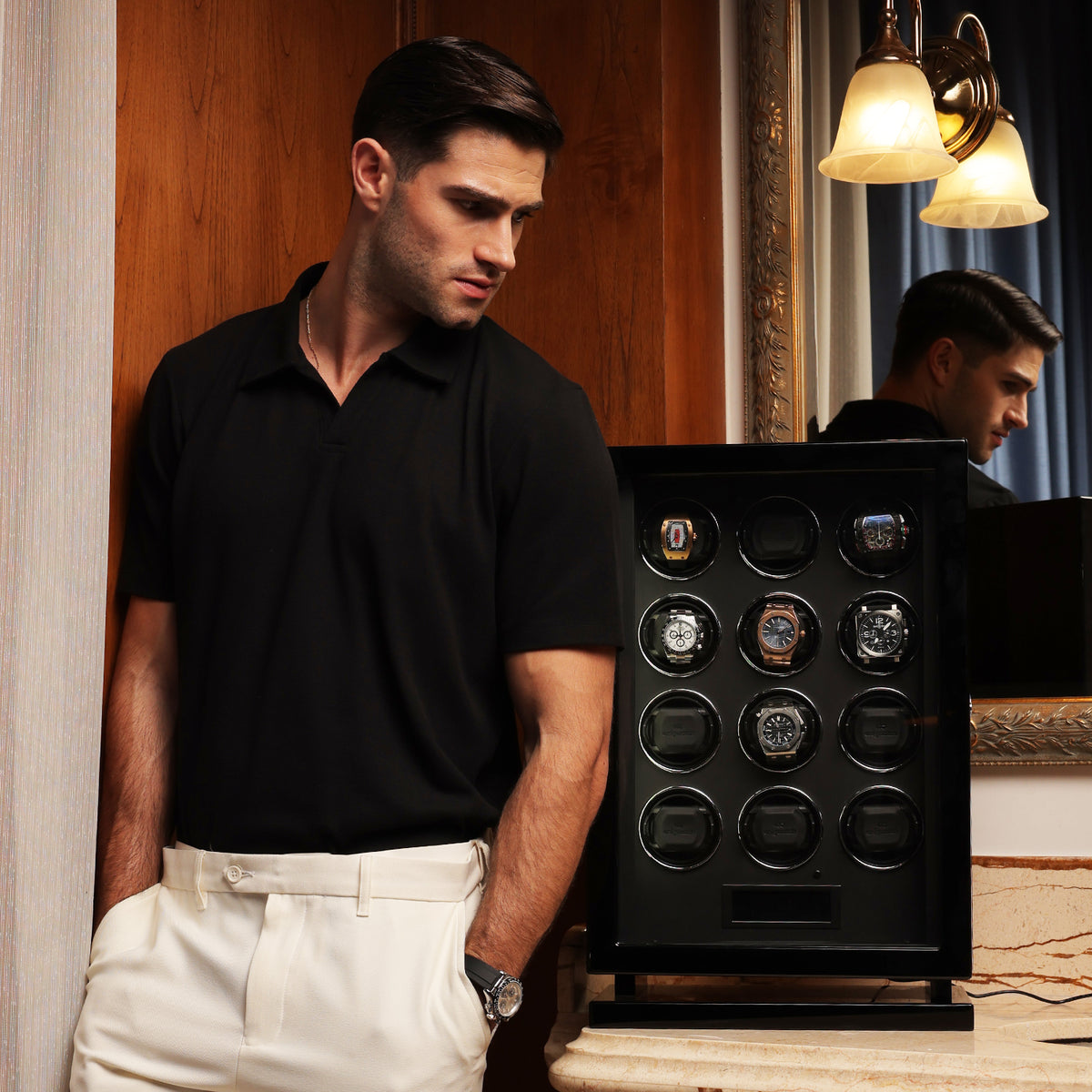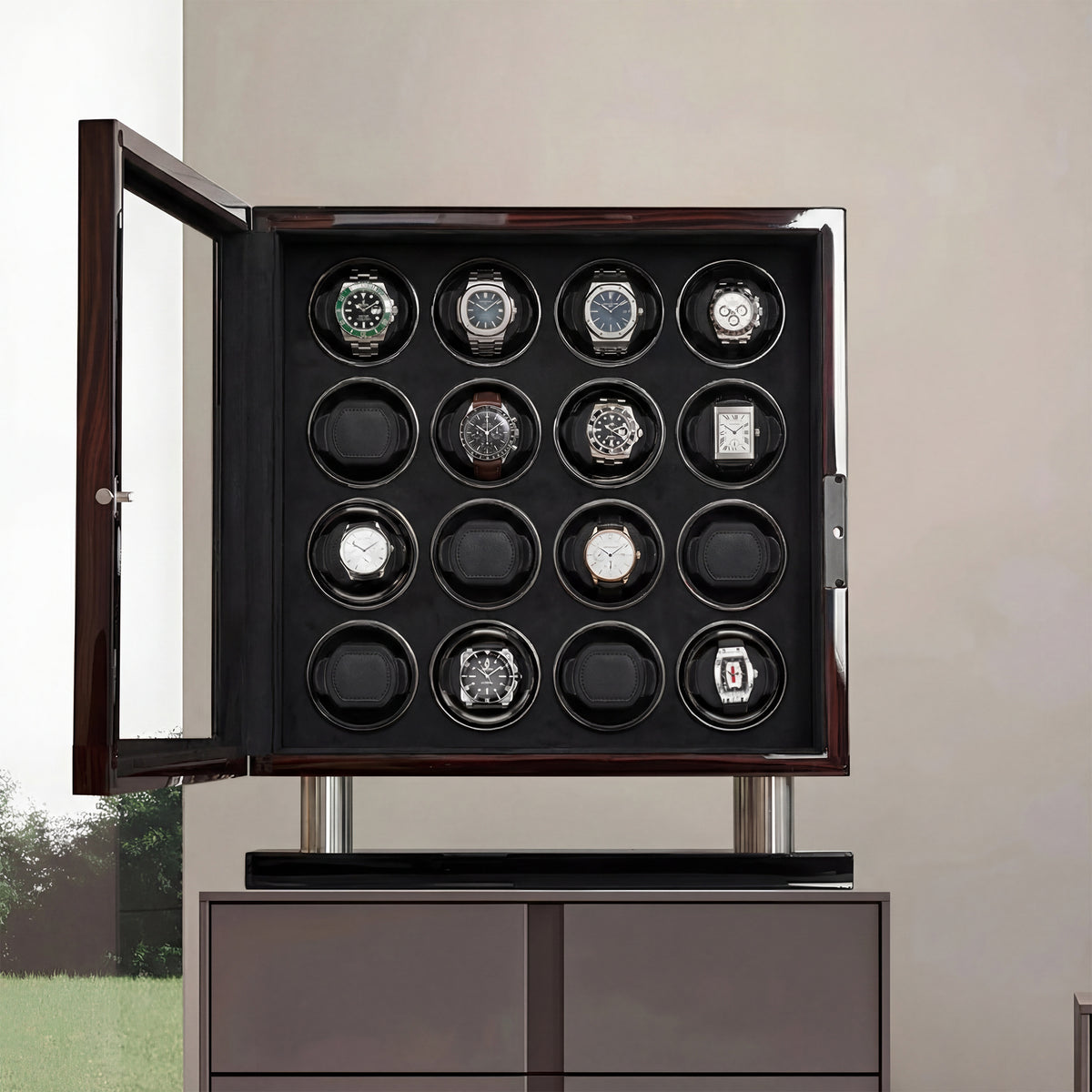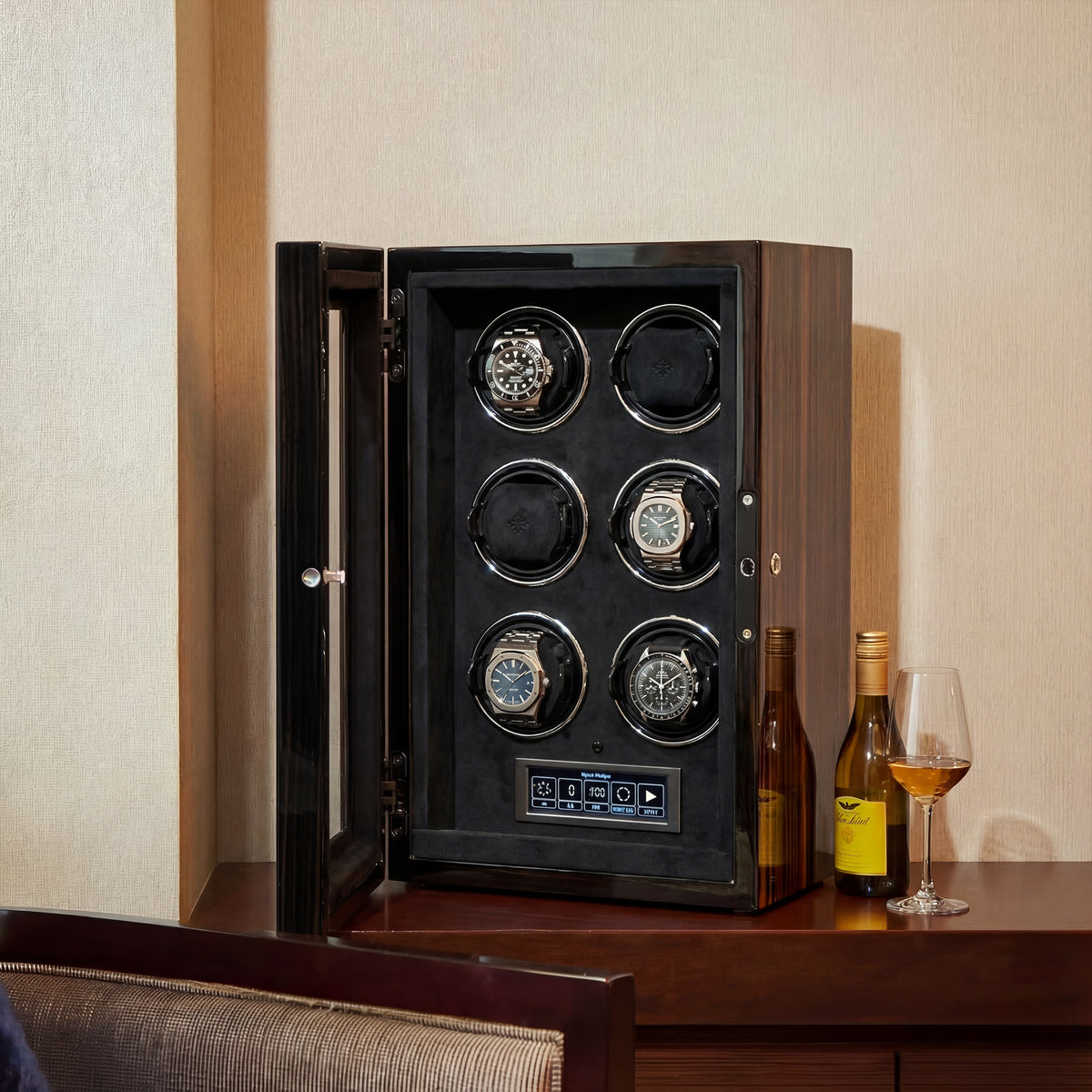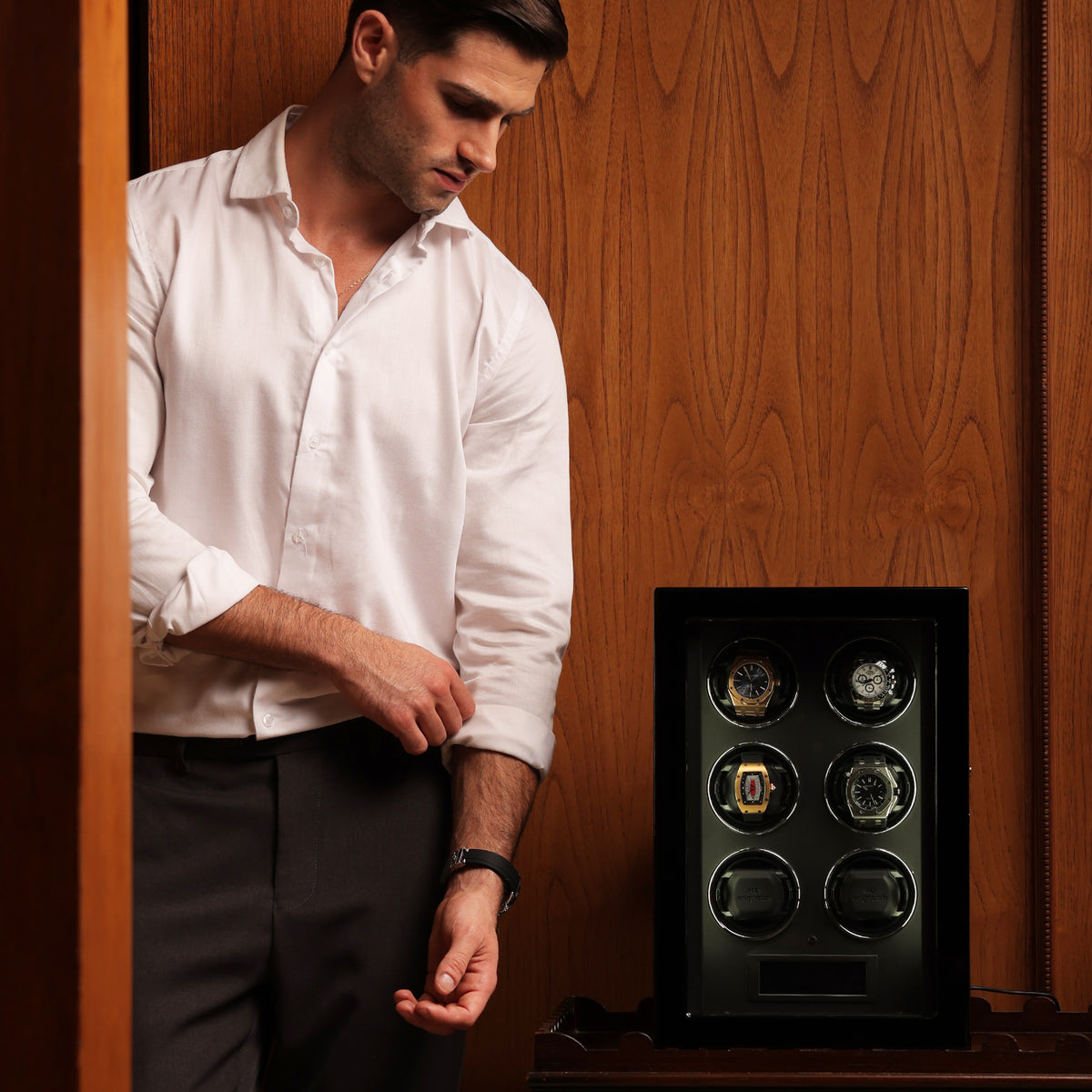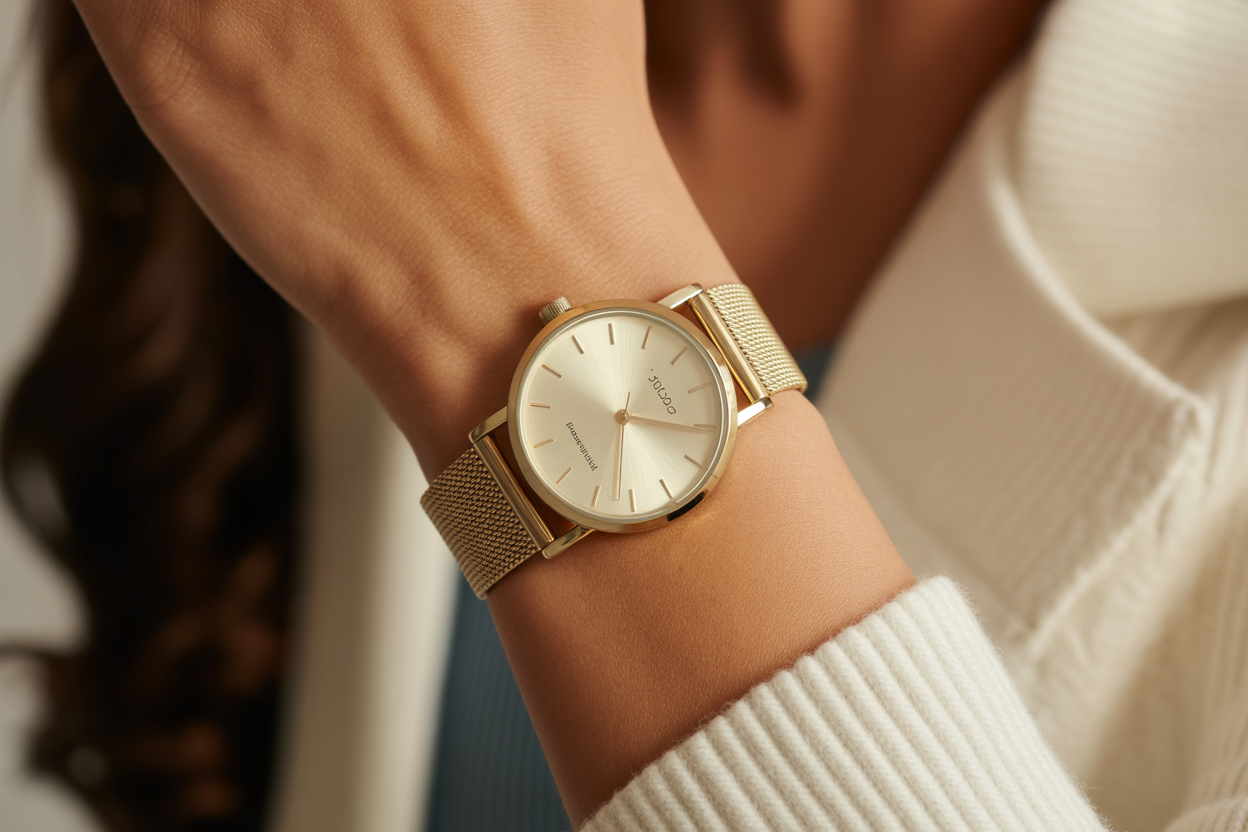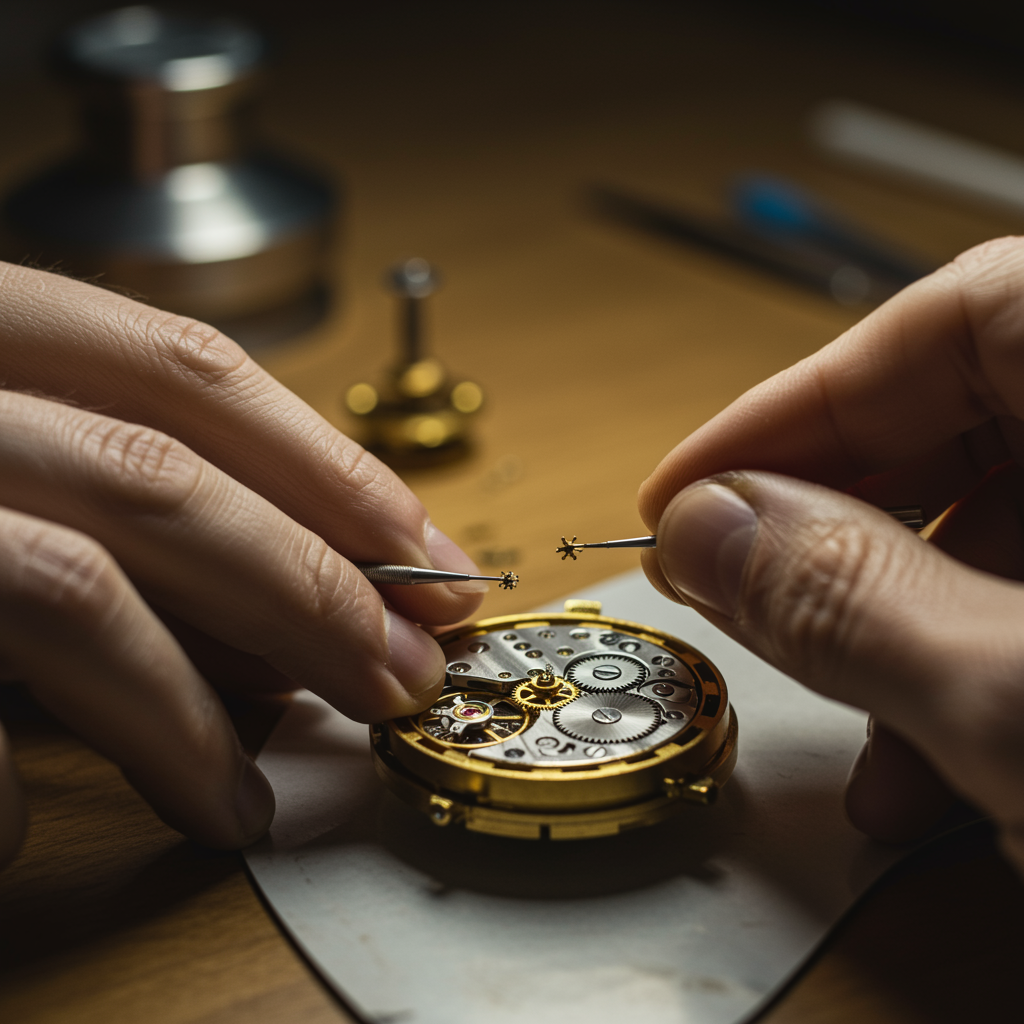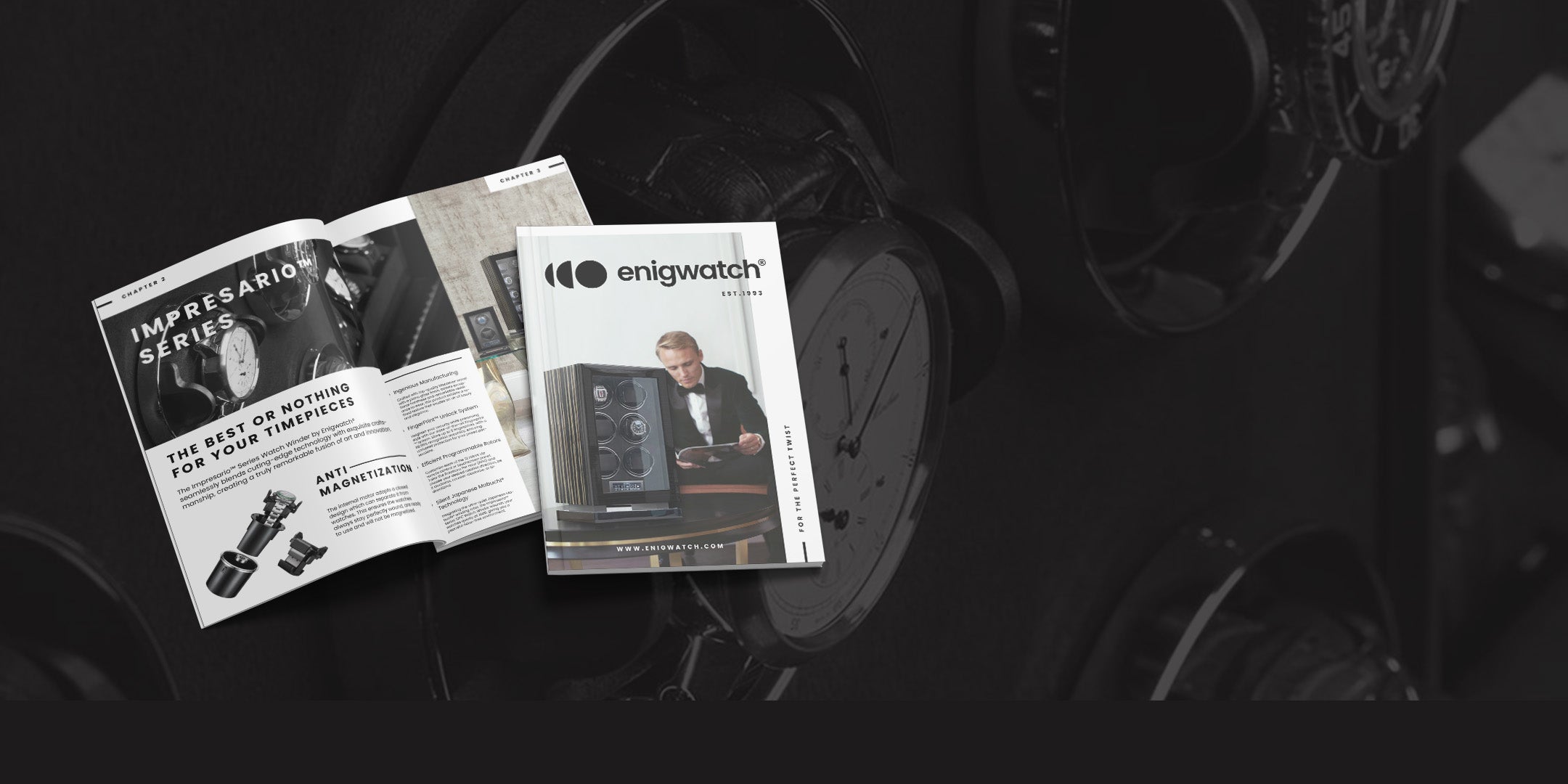A watch winder is a device that charges watches automatically and keeps them running when they are not being worn. The watch winder works with an automatic watch mechanism.
The rotor inside the watch charges the watch by turning. When placed in a watch winder, the automatic watch will automatically rotate at an adjusted speed. So, how does a watch winder work? Of course, that makes sense. You'll find the answer in this article.
How Does A Watch Winder Work?
Most automatic watches can go for at least 24 to 48 hours on their power reserve. However, if you own several watches and can't wear them all regularly, they will eventually stop. This is where watch winders become essential. Watch winders prevent your timepieces from stopping by simulating the natural motion of being worn, keeping the watches wound and operational.
You might also like: The Pros and Cons of Having Watch Winder

In addition to preserving the functionality of your watches, they can also serve as elegant display cases, showcasing your collection while maintaining their precision. Watch winders work by gently rotating the watch, mimicking the movement that winds it as though on your wrist.
As the winder rotates the watch, it causes the internal rotor to spin, which in turn winds the mainspring—storing energy in the form of the power reserve. This energy is what powers the watch’s gears and keeps it running smoothly. That’s why watch winders are so valuable: they ensure your watches are always ready to go without the need to manually wind them. When placed in a winder, your automatic watch will remain powered and never shut off.
Why is a watch winder necessary for automatic watches?
Most luxury watches are automatic and operate without a battery. They keep themselves wound by your wrist movement. If the watch is not worn regularly, it will fairly quickly stop working, normally after 72 hours. The body of the watch contains weights, springs, rotors, mechanisms, gears, etc.
The movements keep the mainspring wound, and the subsequent energy powers the watch. Automatic watches get their energy from mechanical movements. A rotor located inside the engine can be turned to generate power to move the gear's wheels. The gear wheel is what keeps the clock ticking. So, to charge automatic watches, a watch winder is required
Exclusive Watch Winder Sale!
SAVE UP TO 60%
Do I need a watch winder?
Yes, if you have an automatic watch or a collection of automatic watches, you will require a watch winder. An automatic watch is more expensive than a quartz watch and is one of your most prized possessions. So, watch winders were made for people who want to add to their collection of automatic watches, trade watches, or keep their high-end watches as safe as possible. Also, if you wear an automatic watch but stay still all day, like if you work at a computer all day, you will need a watch winder to keep your watch charged.
You might also like: Buying Guide: The Best Watch Winders for Rolex Datejust
What type of watch winder do I need?
We use the rule that 90% of automatic watches are wound clockwise at 900 TPD (rotations per day). This is because of the internal operations of the watch company. Different automatic movements demand various amounts of winding. There are certain exceptions, such as automatic watches wound both clockwise and counterclockwise on 900 TPD and watches wound counterclockwise on 600 TPD.
No matter the brand or model, any automatic watch may be wound precisely using one of our watch winders. The majority of watch winders in our collection let you change the TPD and rotation direction of each individual rotor. You can now adjust each watch separately, regardless of brand or model.
You might also like: The Best Luxurious Watch Winders for TAG Heuer Watches
What are the best watch winder criteria?
The best watch winder criteria are:
- There are various programmable rotation options in addition to start and stop times.
- They suit both the decor of the space in which they will be placed and the style of your automatic watch.
- They offer good, efficient, and non-repetitive motions to keep your watches in good condition.
- Because of the low power consumption of a watch winder, the motor should be inaudible unless you're specifically listening for it.
What happens if I don't protect my automatic watch in watch winder?
You might also like: 5 Best Watch Winders in Qatar That You Must Have
Automatic watches that are not placed in the watch winder are at risk of damage, which could cost more than the watch winder's price. When automatic clocks die for too long, the lubricant thickens and disrupts the clock's operation. In this situation, the automatic watch's mechanism must be cleaned and relubricated. In addition, a clock's mainspring capacity may occasionally degrade over time from its original level.
So, Are All Watch Winders Safe?
Don't let the above fool you into thinking that all watch winders are safe. There are a couple of things to be aware of with watch winders that could lead to damaged watches. Good quality watch winders, in general, will not cause damage to your automatic watch.
The watch winder movements keep the mainspring of the watch wound, just as it would if it was worn on the wrist. However, poor quality or incompatible winders may not be safe for the watch due to the magnetization of the watch, constant engagement, and excessive wear of the slip clutch.
2023's Top Watch Winder Recommendations
As the horological world evolves, the need for maintaining the precision and functionality of automatic watches becomes paramount. Watch winders play a crucial role in this, ensuring that your cherished timepieces remain accurate even when not worn.
With 2023 ushering in a new wave of technological advancements, selecting the right watch winder has never been more essential. Let's dive into the crème de la crème of watch winders that have made a significant mark this year.
Yachtline™ Series 8 Watch Winder
Stepping into 2023, the Yachtline™ Series 8 stands out as a beacon of innovation and elegance. Designed with meticulous attention to detail, this watch winder not only boasts an exquisite exterior but also integrates state-of-the-art features.
From its silent motor operation to its customizable winding modes, the Yachtline™ Series 8 ensures optimal winding for a diverse range of automatic watches. Its LED backlighting adds a touch of luxury, making it a visual treat for any watch enthusiast.
If you're seeking a blend of aesthetics and functionality, the Yachtline™ Series 8 is a must-have for your collection. Discover its magic and elevate your watch care routine today!
Impresario™ Series 12 Watch Winder
Another masterpiece that has garnered attention in 2023 is the Impresario™ Series 12 Watch Winder. A testament to superior craftsmanship, this watch winder offers individualized winding settings for up to 12 watches, catering to the needs of avid collectors.
Its advanced winding technology ensures that each timepiece receives precise care, preserving its longevity. The plush interiors, combined with a sleek design, make it a perfect addition to any sophisticated setting.
With the Impresario™ Series 12, you're not just investing in a watch winder; you're investing in a legacy. Experience the pinnacle of watch winding technology and secure yours now!
Conclusion
In conclusion, a watch winder is a device that can recharge automatic watches and keep them running when they’re not being worn. The watch winder makes use of an automatic watch mechanism that charges by rotating an internal rotor. Using a watch winder can help you treat your automatic watches with care.
A watch winder as a watch storage medium is a wonderful solution, especially for watch collectors who have multiple collections of watches. The market offers a wide range of stylish and different watch winder models. Of course, the watch winder manufacturer has carefully considered this so that it can be used as a storage device of aesthetic and exclusive value as well as an automatic clock maintenance tool.
FAQs
1. How do I make sure the Watch Winder's settings are correct?
When a watch is wound on a watch winder, the time can be checked every 48 hours to make sure it is still correct. In a watch winder, you can display your entire collection of automatic watches
2. Do Watch Winders Actually Wind Up A Watch?
People often think that a watch winder will wind up a watch. This is incorrect. A watch winder will maintain the watch's mainspring tension at the level it was at when placed in the winder. Generally, 30 to 40 manual turns are required to fully wind the mainspring of an unwound wristwatch.
Depending on the amount of movement and activity that has occurred throughout the day, the watch should remain wound and at peak performance. A watch winder will keep the watch in working order. Occasionally, the watch will benefit from a few additional crown turns.

